The drive from Detroit to Denver is about 1,300 miles, making it one of the longest stretches on our trip. Fortunately, we had one more place to visit that we hoped would break up the trip: the Louisville Slugger Museum and Factory, in Louisville, Kentucky. The additional 100 miles it added to our trip were well worth the detour!
What is a Louisville Slugger?
Louisville Slugger is a brand of bat. Until about 10 years ago, it represented about 75% of the market for wood bats. In the last decade or so, there has been a surge in competitors striving to make even better wood bats for professionals and amateurs, and that has eroded Louisville’s long-time hold on the industry.
Wood bats are the only type of bats permitted by the MLB, and they are strictly regulated. The first Louisville Slugger was created by Bud Hillerich, the 17-year-old son of the owner of Hillerich & Bradsby, a furniture manufacturer in Louisville, Kentucky. Young Hillerich was an amateur player and baseball enthusiast. He had crafted bats for his friends and himself but found his break as a bat manufacturer in 1884.
One of the Louisville Ellipse’s star players, Pete Browning, had been in a batting slump for some time. The day that Hillerich attended the game, he broke his bat at the plate. Hillerich offered to make a new one for him. Browning accepted his offer, and went on to break his slump and set new records at bat. Hillerich quickly found a market for his creation with other baseball players. He named his new brand after Pete Browning, whose nickname was the Louisville Slugger.

Highlights of the Factory Tour
Even if you aren’t a baseball fan, the Louisville Slugger factory tour is worth a visit. The tour begins with a movie that explains how maple, ash, and birch trees are selected from the woods in southern Pennsylvania. Our knowledgeable tour guide, Roger, explained the differences in performance characteristics between the woods.
The factory cuts the trees into long cylinders, a bit longer than a baseball bat, called bullets. These are then kiln-dried.
Bats produced under contract for professional players are crafted to their specifications and emblazoned with their signature. A custom dye in a cutter than produces one bat at a time. Larger machines produce bats for retail distribution in greater quantities.
After they have been shaved to the right dimensions, the ends that were used to hold the bat in place are cut off, and the ends are sanded. Some bats also have a cup cut into the end of the bat to make it lighter in weight. Next, the Louisville Slugger logo is etched into the bat. A machine “rubs” the bat to make the wood harder. From here, workers hand-dip the bats in a sealant and hang them to dry. Some are heat treated to raise the contrast in the grain or painted one or more colors.
The factory produces thousands of bats each year, and prominently displays the long list of professional players who have had contracts for Louisville Sluggers. In the bat vault are the original copies of the over 2,000 custom bats the company has crafted since the 1930s.

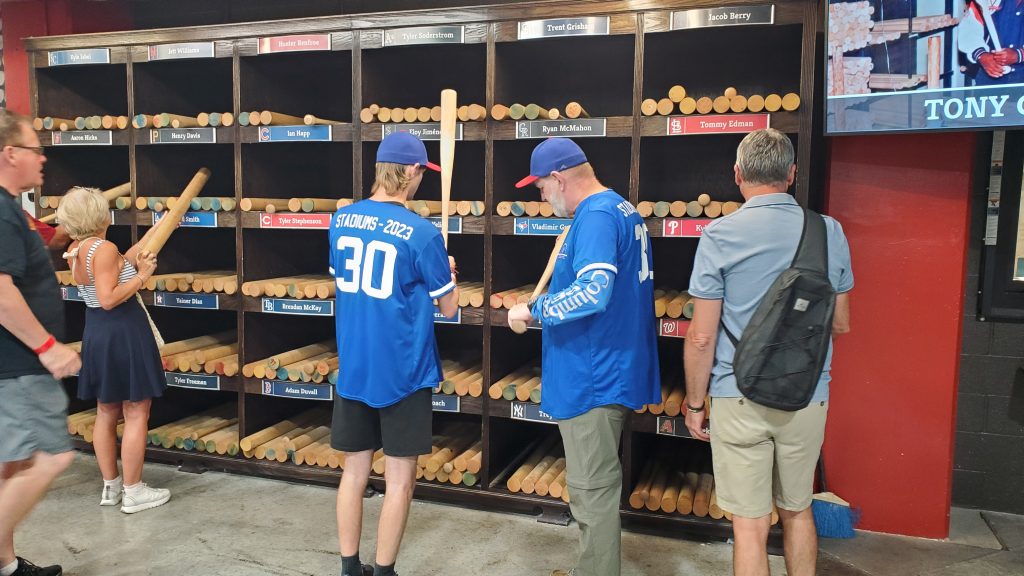
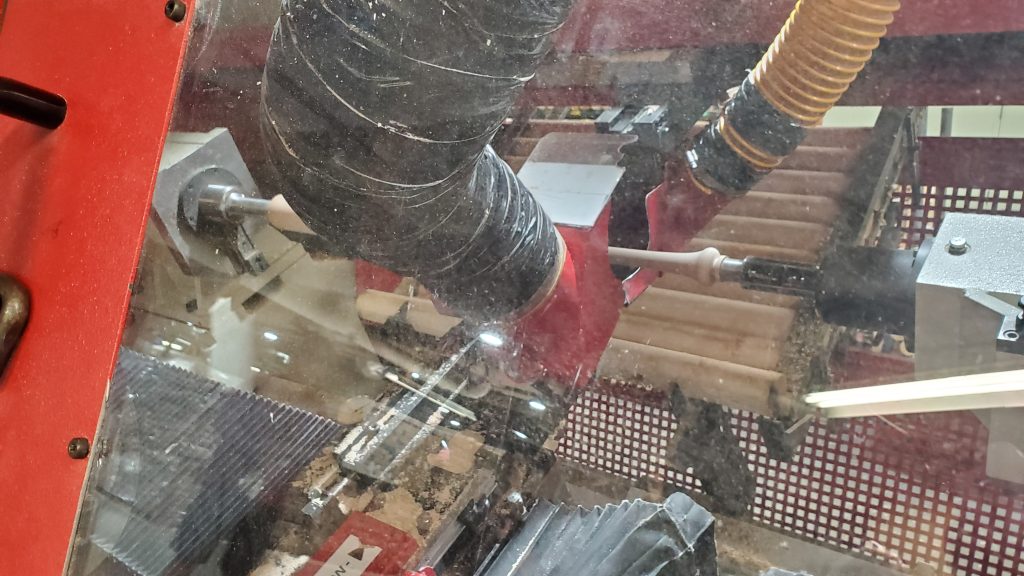

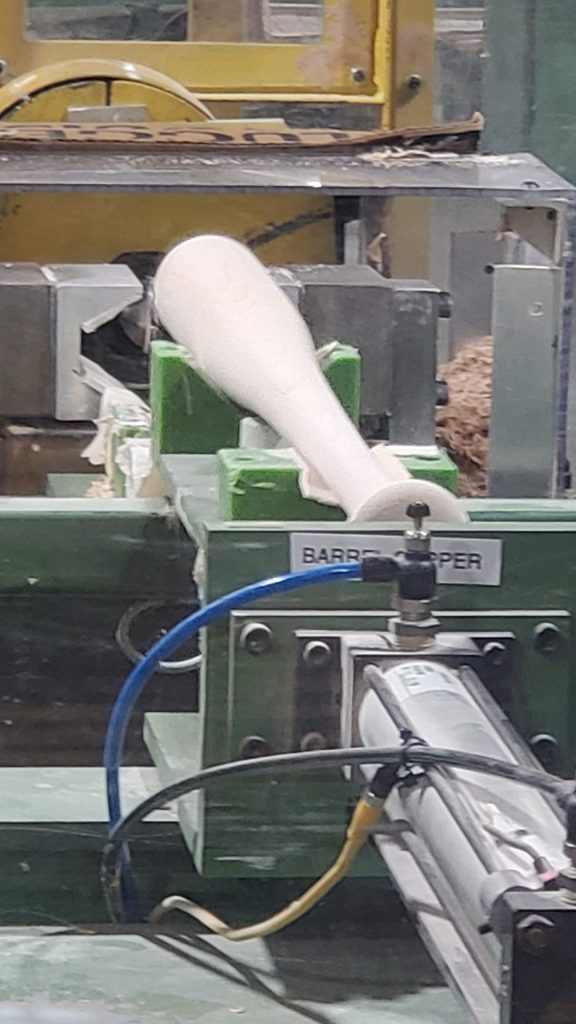
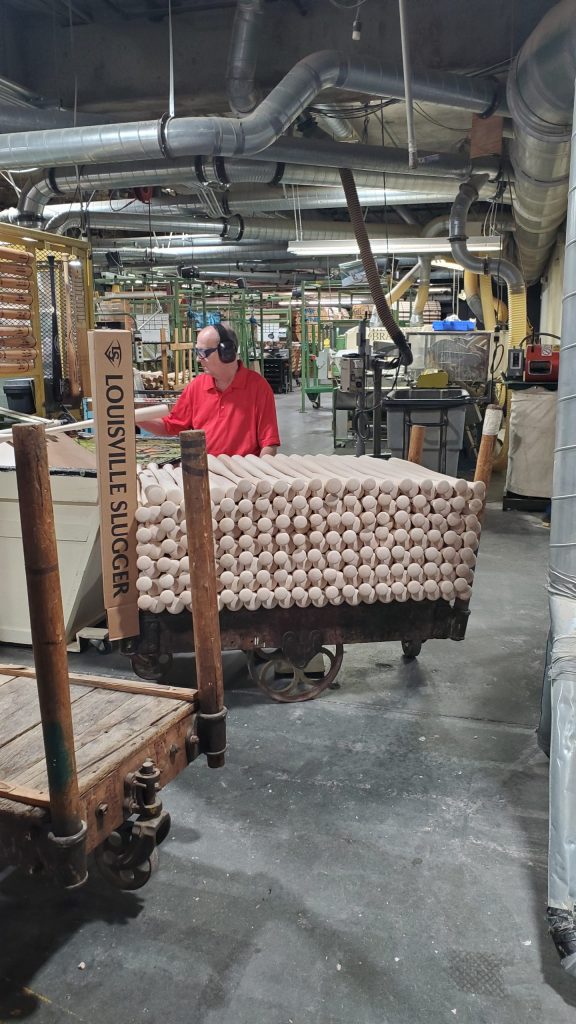

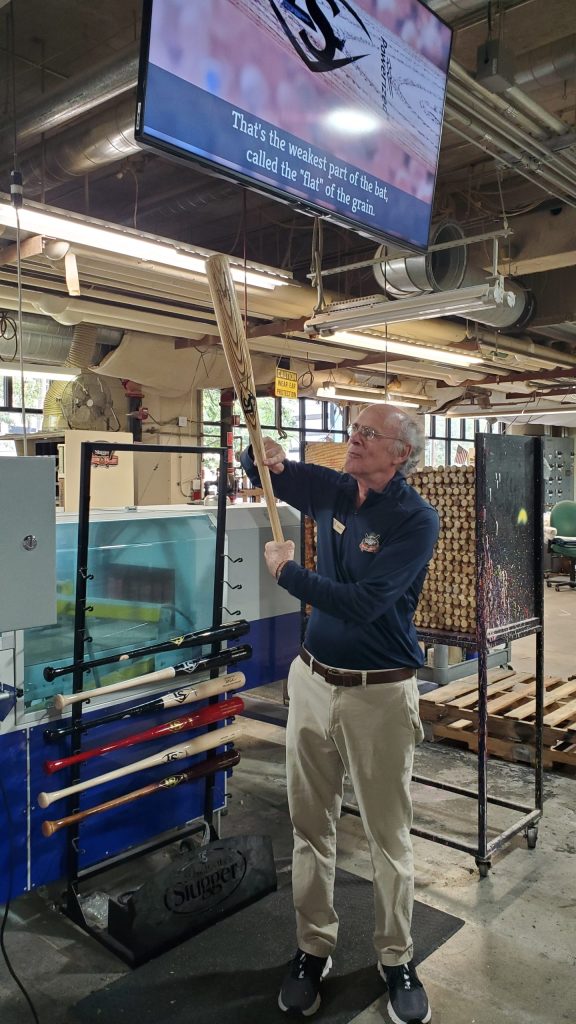




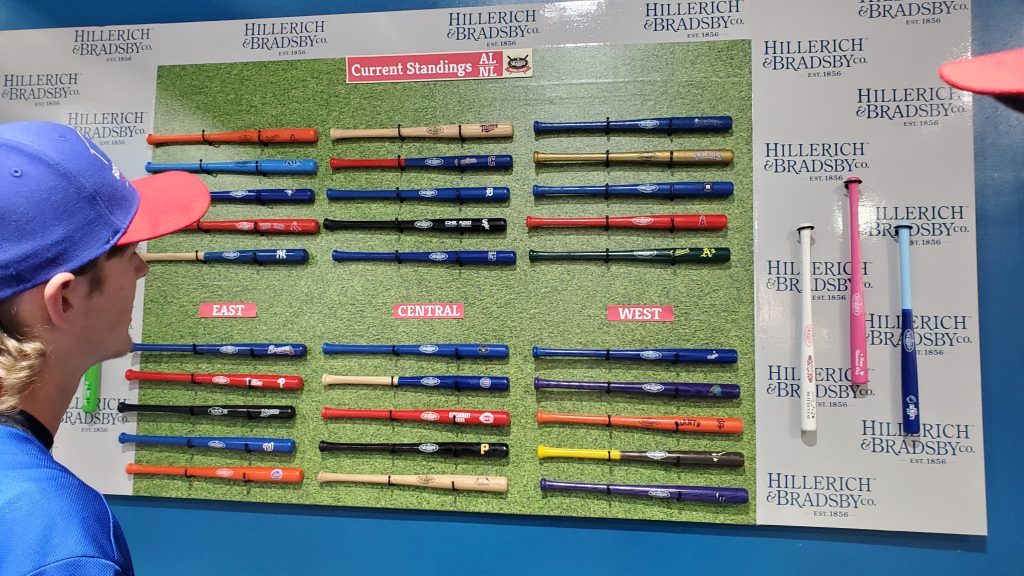

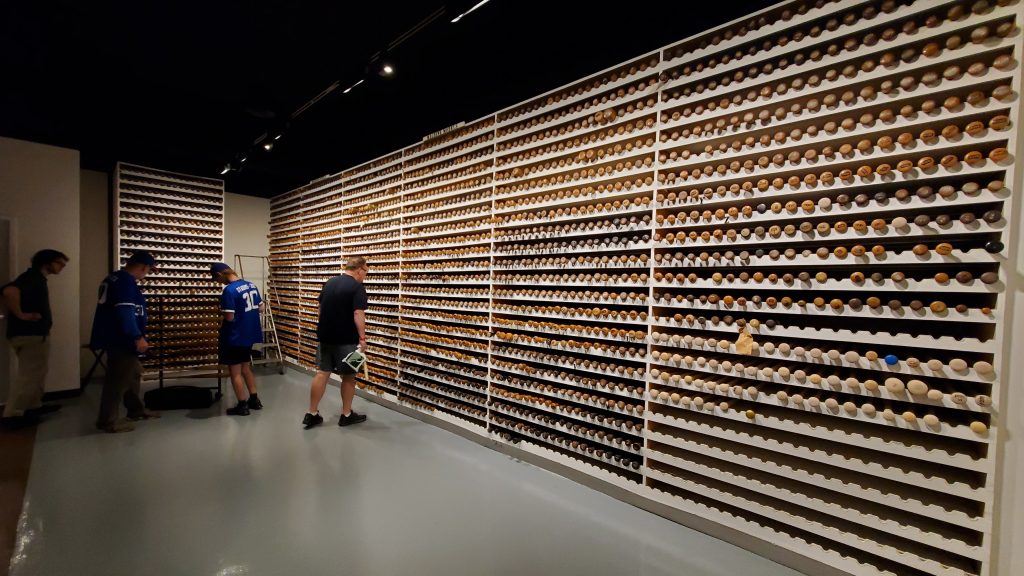
Touching History
One of the highlights of the museum is the ability to hold history in your hands. The Louisville Slugger Museum has original, game-used bats from many of its customers. A white-gloved museum employee is happy to pull any of the 40 or so bats on display for baseball enthusiasts to hold. Ryan and Brad admired the strength Babe Ruth had to heft his heavy, 36-inch, 42.5-ounce bat. Ryan also tried out Ken Griffey’s 34-inch, 30.5-ounce bat, and Derek Jeter’s 34-inch, 32-ounce bat.
While these pieces of baseball history are not available for public use, replicas made with the original dyes are! The Louisville Slugger Museum and Factory has a batting cage available for players to try out their products. They have a variety of their standard, retail bats available. They also have a selection of bats from current and past professional players that batters can try in the cage.
Ryan tried out Vladimir Guerro Jr.’s drop 3 (34-inch, 31-ounce) bat, as well as a 33.5-inch, 31-ounce stock bat. In the end, he decided he prefers his current bat, a Victus.



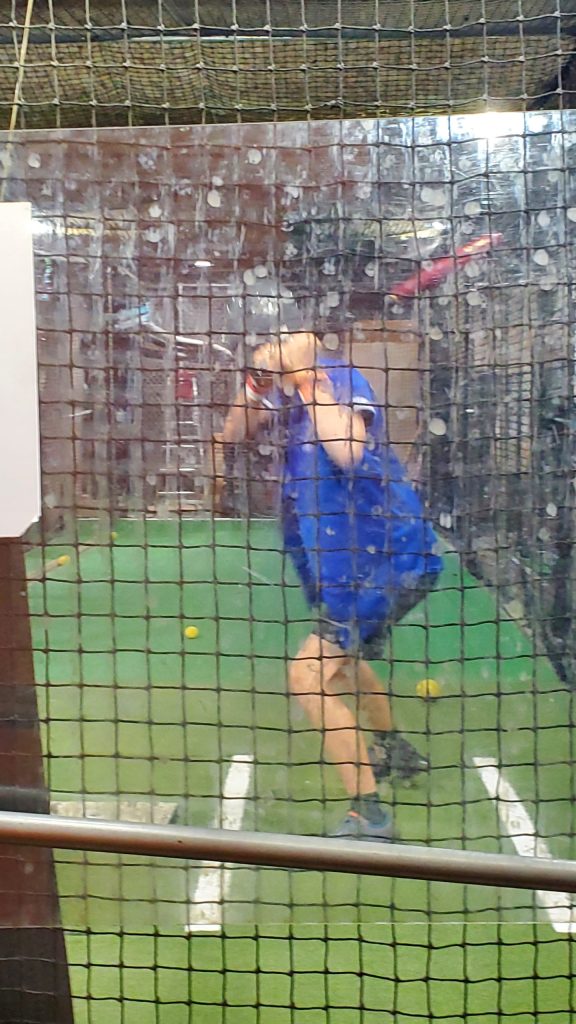
Westward We Go!
The Louisville Slugger Museum and Factory closed at 5:00. Since we still had some energy, we decided to begin our long drive west. We hopped on the road and drove until the wee hours of the next morning. The next day, we got on road as quickly as we could and arrived in Denver a day early.
The pace on this trip hasn’t included much downtime, and we were grateful to have a full, unplanned day to rest. I cleaned the trailer inside, did laundry, slept, and read a book. The next morning, I took a long walk around the Cherry Creek State Park.
Next Up:
My next post recaps our experience at Coors Field, home of the Colorado Rockies. This will be stadium number 26, the beginning of our final stretch of stadiums.
